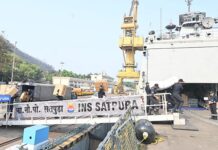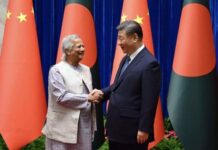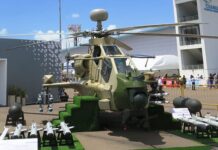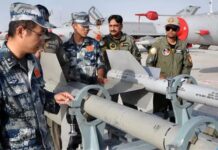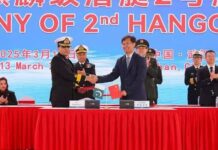Key Takeaways
• The PLAAF and PLAN Aviation together constitute the largest aviation force in the Indo-Pacific region.
• The PLAAF is rapidly catching up to Western air forces. The PLAAF continues to modernize with the delivery of domestically built aircraft and a wide range of UASs.
• In October 2019, the PRC signaled the return of the airborne leg of its nuclear triad after the PLAAF publicly revealed the H-6N as its first nuclear-capable air-to-air refuelable bomber.
The People’s Liberation Army Air Force (PLAAF) and PLAN Aviation together constitute the largest aviation forces in the region and the third largest in the world, with over 2,800 total aircraft (not including trainer variants or UASs) of which approximately 2,250 are combat aircraft (including fighters, strategic bombers, tactical bombers, multi-mission tactical, and attack aircraft). The PLAAF’s role is to serve as a comprehensive strategic air force capable of long-range airpower projection. The PRC’s 2019 defense white paper described the PLAAF’s missions and tasks as transitioning from territorial air defense to “offensive and defensive operations.” In 2021, General Chang Dingqiu assumed the post of PLAAF commander and continued to enact PLAAF reforms to improve the force’s ability to accomplish joint warfighting tasks. The PLAAF is rapidly catching up to Western air forces. This trend is gradually eroding longstanding and significant U.S. military technical advantages vis-à-vis the PRC in the air domain.
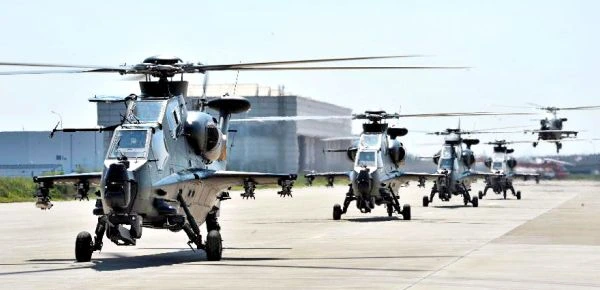
The CMC’s intent is to transform the PLAAF into a more effective and capable force that is proficient at conducting joint operations. The PLAAF is comprised of aviation, airborne, air defense, radar, electronic countermeasure, and communications forces. Amid the wide- ranging reorganization of the PLA, the PLAAF has reorganized into five Theater Command Air Forces, established at least six new air bases, and restructured previously subordinate regiments into brigades under the new bases by disbanding its fighter and fighter-bomber divisions.
Fighters. The PLAAF and PLAN Aviation continue to field greater numbers of fourth- generation aircraft (now more than 800 of 1,800 total fighters, not including trainers) and probably will become a majority fourth-generation force within the next several years. For fifth-generation fighters, the PLAAF has operationally fielded its new J-20 fifth-generation stealth fighter, and PRC social media revealed a new 2-seat variant of the J-20 in October 2021. The PLAAF is preparing upgrades for the J-20, which may include increasing the number of air-to-air missiles (AAMs) the fighter can carry in its low-observable configuration, installing thrust-vectoring engine nozzles, and adding super cruise capability by installing higher-thrust indigenous WS-15 engines. Development continues on the smaller FC-31/J-31 for export or as a future naval fighter for the PLAN’s next class of aircraft carriers.
Bombers. The PRC’s bomber force is currently composed of H-6 Badger variants, which are domestically produced versions of the Soviet Tupolev Tu-16 (Badger) bomber. Despite the relative age of its bomber force, the PLAAF has worked to maintain and enhance the operational effectiveness of these aircraft. In recent years, the PRC has fielded greater numbers of the H-6K, a modernized H-6 variant that integrates standoff weapons and features more-efficient turbofan engines for extended-range. The H-6K can carry six LACMs, giving the PLA a long-range standoff precision strike capability that can range targets in the Second Island Chain from home airfields in mainland China. PLAN Aviation has traditionally fielded the H-6G to support maritime missions. More recently, PLAN Aviation has begun operating the H-6J, a maritime strike version of the H-6K with six weapons pylons for ASCMs. This aircraft carries six supersonic long-range YJ-12 ASCMs and can attack warships out to the Second Island Chain.
During the PRC’s 70th anniversary parade in 2019, the PLAAF publicly revealed the H-6N, a derivative of the H-6K optimized for long-range strikes. The H-6N features a modified fuselage that allows it to carry externally an air-launched ballistic missile (ALBM) that may be nuclear capable. In October 2020, an H-6N was observed carrying an air-launched ballistic missile. The H-6N’s air-to-air refueling capability also provides it greater reach over other H- 6 variants that are not refuelable in air.
Special Mission Aircraft. In 2019, the PLAAF publicly debuted its new Y-9 communications jamming/electronic countermeasures aircraft (known as the GX-11). This aircraft is designed to disrupt an adversary’s battlespace awareness at long ranges. The PLA can conduct air-to- air refueling operations to extend the ranges of its fighter and bomber aircraft equipped with refueling probes using the H-6U, a modified tanker variant of the H-6 bomber, as well as a small number of larger IL-78 Midas. In addition, the PRC is developing a tanker variant of its Y-20 heavy-lift transport, which will enable the PLAAF to expand its tanker fleet and improve the PLAAF’s ability to operate beyond the First Island Chain from bases in mainland China.
Production and deliveries of the KJ-500-the PRC’s most advanced airborne early warning and control (AEW&C) aircraft-continued at a rapid pace, joining earlier KJ-2000 Mainring and KJ-200 Moth variants. These aircraft amplify PLAAF’s ability to detect, track, and target threats in varying conditions, in larger volumes, and at greater distances. It also extends the range of the PLA’s integrated air defense system (IADS) network. Furthermore, China has produced at least one KJ-500 with an aerial refueling probe, which will improve the aircraft’s ability to provide persistent AEW&C coverage.
The PRC’s aviation industry continues to advance with deliveries of its domestic Y-20 large transport aircraft and completion of the world’s largest seaplane, the AG600. These transports will supplement and eventually replace the PRC’s small fleet of strategic airlift assets, which to date, consists of a limited number of Russian-made IL-76 aircraft. These large transports are intended to support airborne C2, logistics, paradrop, aerial refueling, and strategic reconnaissance operations as well as HA/DR missions.
Uncrewed Aerial Systems (UASs). China continues their comprehensive UAS modernization efforts, highlighted by the routine appearance of ever more sophisticated UASs across theater and echelon levels. The last three years have seen several key milestones. These include the airshow display and operational appearance of the Xianglong jet powered UAS, as well as the unveiling of both the supersonic WZ-8 UAS and a redesigned version of the GJ-11 stealth uncrewed combat aerial vehicle (UCAV). The PLA also continues the maritime use of ISR UASs, featuring both the venerable BZK-005 and the newer TW-328/TB001. China is also expanding the applications of large UASs, demonstrating uses including disaster communications, anti-submarine roles, firefighting, and weather modification. Advanced small UASs are increasingly appearing in both military and civilian applications, with the PRC industry remaining a key exporter of UAS and components of all sizes.
In addition to maturing their current capabilities, China is also signaling its efforts in next generation capabilities. Air and trade shows are displaying growing numbers of autonomous and teaming systems, including for combat applications. In these concepts, PRC developers are demonstrating an interest in additional growth beyond ISR and EW into both air-to-air and air-to-ground combat, with a substantial amount of development displaying efforts to produce swarming capability for operational applications.
Air and Missile Defense. The PLAAF possesses one of the largest forces of advanced long- range SAM systems in the world, composed of Russian-sourced SA-20 (S-300) battalions and domestically produced CSA-9 (HQ-9) and follow-on HQ-9b battalions. To improve its strategic long-range air defenses, the PRC has acquired the SA-21 (S-400) SAM system from Russia. The PRC is also developing its indigenous CH-AB-X-02 (HQ-19), which will likely have a ballistic missile defense (BMD) capability. China is also developing kinetic-kill vehicle technology to field a mid-course interceptor, which will form the upper layer of a multi-tiered missile defense. The PLA conducted a test of a land-based mid-course interceptor on February 4, 2021.
PLAAF Airborne Corps. The PLAAF Airborne Corps commands six airborne combined- arms brigades, a SOF brigade, an operational support brigade, an aviation transport brigade, a training base, and a new training brigade. The six combined arms brigades consist of three airborne infantry, one air assault, one wheeled airborne mechanized (wheeled air droppable armored vehicles), and one tracked airborne mechanized (tracked air droppable armored vehicles).
Each airborne combined-arms brigade typically commands four combined-arms battalions, an artillery battalion, a reconnaissance and pathfinder battalion, an operations support battalion, and a service support battalion, and possibly a transportation battalion.
Based on the Annual Report by Secretary of Defense to U.S. Congress: Military and Security Developments Involving the People’s Republic of China





